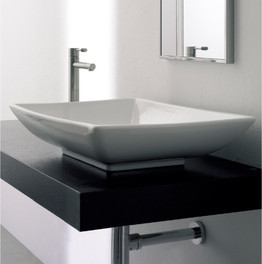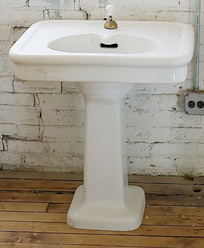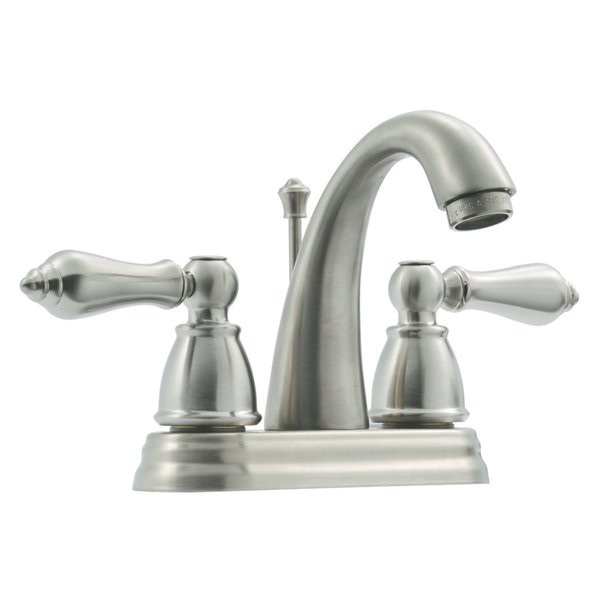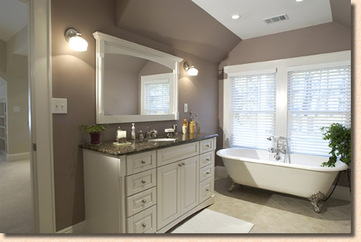As the most used bathroom fixture, your sink may deserve the most planning on a bathroom remodel. It needs to serve your needs, fit your bathroom style and have a color to please the eye and bathroom color scheme for years to come. When it comes to price and design, you need to determine this before you go shopping. Know what you want to spend and know what style you so you are not overwhelmed with all of the choices out there for sink and faucet combinations.
Here are 5 popular sink types you can have in your bathroom:
Here are 5 popular sink types you can have in your bathroom:

Above-Counter Sink
This type of sink has recently gained popularity in homes and restaurants in the US. The sink is mounted in the vanity so part pr all of the sink sits on top of the counter. This brings the sink up to a more comfortable level and offers a more presentable feature. Water often falls into the bowl from a faucet to create a water fall type feature.
Drop-In Sink
This type of sink has also been referred to as a self-rimming sink. They are typically made of cast iron or porcelain so their heavy weight keeps them in place. A thin layer of sealant forms a water tight seal under the outside edge of the rim. There is often a fancy backing that goes behind the faucet with some type of curved boarder.
Integral Sink
This sink type is the best solution for children's bathrooms as the sink and the counter is all one piece so water leaks won't happen and clean up is easy. You can have a large counter with an under-counter sink all the same color and type of material. These sinks are typically made from an acrylic material.
This type of sink has recently gained popularity in homes and restaurants in the US. The sink is mounted in the vanity so part pr all of the sink sits on top of the counter. This brings the sink up to a more comfortable level and offers a more presentable feature. Water often falls into the bowl from a faucet to create a water fall type feature.
Drop-In Sink
This type of sink has also been referred to as a self-rimming sink. They are typically made of cast iron or porcelain so their heavy weight keeps them in place. A thin layer of sealant forms a water tight seal under the outside edge of the rim. There is often a fancy backing that goes behind the faucet with some type of curved boarder.
Integral Sink
This sink type is the best solution for children's bathrooms as the sink and the counter is all one piece so water leaks won't happen and clean up is easy. You can have a large counter with an under-counter sink all the same color and type of material. These sinks are typically made from an acrylic material.

Pedestal
One of the best aspects of a pedestal sink is making a small bathroom look bigger. They include a narrow column with a sink bowl (available in different shapes) that looks like it balances on top. These sinks are made to look as if they are freestanding but they are really mounted to the wall. The pedestal is basically used to hide water pipes.
Under-Counter Sink
This type of sink has also been referred to as a undermount sink and is found in both bathrooms and kitchens. This style of sink presses up under the counter and is held in place with clips that screw into the embedded inserts. A water-tight seal is created with silicone or grout before the counter is tightened.
One of the best aspects of a pedestal sink is making a small bathroom look bigger. They include a narrow column with a sink bowl (available in different shapes) that looks like it balances on top. These sinks are made to look as if they are freestanding but they are really mounted to the wall. The pedestal is basically used to hide water pipes.
Under-Counter Sink
This type of sink has also been referred to as a undermount sink and is found in both bathrooms and kitchens. This style of sink presses up under the counter and is held in place with clips that screw into the embedded inserts. A water-tight seal is created with silicone or grout before the counter is tightened.


 RSS Feed
RSS Feed